The guides for the Friends of the Chicago River gathered at Skokie Lagoons yesterday in order to tune up their Chicago River canoe rescue skills. In order to efficiently help our customers in case they should tip their canoe on a trip, it is essential we learn and practice these emergency skills.
Chicago River canoe rescue
When someone dumps the first priority is making sure the people in the water are safe. We require that they wear a secured personal flotation device (PFD), so there should be no problem with them staying afloat. We encourage them to stay with the boat as the boat will always float, we need their assistance righting the boat, and of course the ultimate goal is to get them back safely inside the canoe.
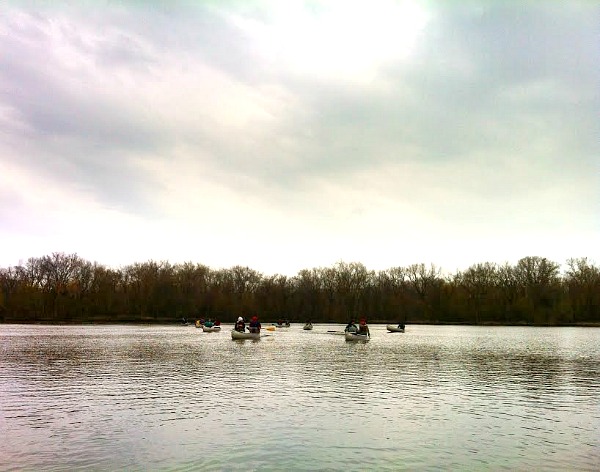
Guides for the Friends of the Chicago River out at the Skokie Lagoons in order to practice their Chicago River canoe rescue skills
Canoe over canoe technique
There are two ways we can flip the boat over. The first technique is the canoe over canoe option or it could also be called the T-bone technique. The video below illustrates this option. The rescue boat will get perpendicular to the over turned canoe or t-bone to it. The person in the bow or front will turn towards the person in the stern or back. We then ask one of the people in the water to push down on the back of the canoe at the same time that the people in the canoe will pull up on the dumped canoe. The water will drain when this is done. They then will pull the canoe up over the canoe. After the canoe is fully on top of the canoe we will then flip the canoe over and then push back on to the water.
The next step is to get the people back into the canoe. There are also a couple of ways to get this accomplished. In the video below, we have Marvin hook his legs into the canoe and the rescue canoe and pull himself up and into his boat. They can also get on the other side of the canoe and pull themselves in while we hold the far gunnels down in order to balance. We can also hook a line over the canoe and create a step where they can use to step into the canoe.
The curling method
The other method for getting a dumped canoe upright in the water is the curling method. Instead of t-boning with the downed canoe, the rescue boat gets parallel to the overturned craft. We reach over to the opposite gunnels with the canoe right side up and pull it up towards us and then lean back to allow the water to drain and then flip the canoe over and voila. The two below videos show the curling method in action.
Each canoe guide got a chance to practice one method. Then it was our turn. I have had one opportunity to practice the canoe over canoe method last year, and I assisted in a curling method last year on the Friendly Float, but I have never done the curling method myself. We were chosen to display the curling method.
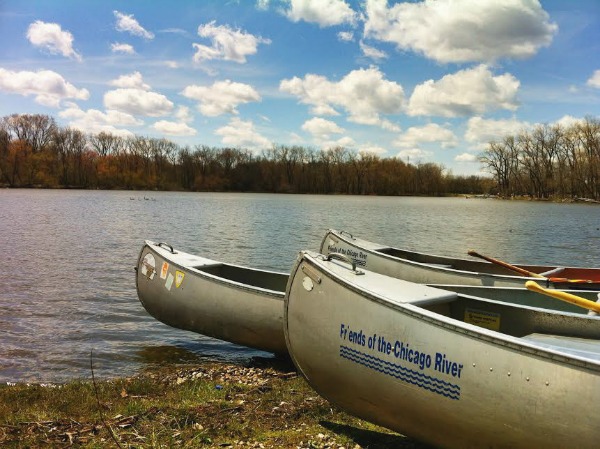
Chicago River canoe rescue skills on the Skokie Lagoons from last year when it was a little bit more of a pleasant day
I was joined by new guide Lindsay and it was her first rescue. We were both a little nervous having not a lot of experience, but it was surprisingly easy. Our only error is we did not let the canoe drain long enough. It is best to hold the canoe up until all the water is out. This is no big deal though as the excess water can always be sponged our bailed out. The important part is getting the paddler back into the canoe. With either method, If there are other canoes around, it is helpful for one of these canoes to get parallel to the rescue boat and latch on to provide support and stability.
You might be saying to yourself, why don’t you just drag the boat to shore and have the swimmers swim to shore. This is definitely an option, but on the Chicago River it is often not available. There are high muddy banks in the northern section and in the downtown section there are high seawalls and of course buildings, so many times this is not possible. We also lead trips in lakes and lagoons where it is too far to swim and pull a boat to shore.
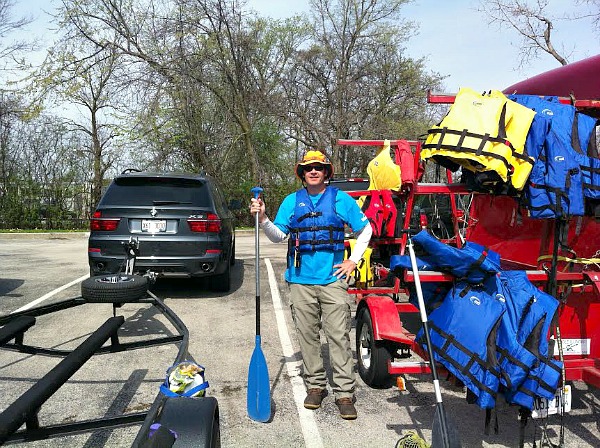
My first guiding experience last year with the Friends of the Chicago River after taking my first course in Chicago River canoe rescue
If you are thinking of taking an urban adventure with the Friends of the Chicago River, and you might be a little apprehensive about dumping, you can rest assured that the volunteer guides are well versed at the art of canoe rescue in order to get you out of the water efficiently as possible. These three rescue videos were all completed within two minutes. I think that is pretty impressive.
The mission of the Friends of the Chicago River is to improve and protect the Chicago River system for people, plants, and animals. The organization brings people out on the river to raise awareness to its beauty and for the need to protect and improve the water quality of our river. Even though I have been on the river many times, it continues to surprise me. On the North Branch a month ago, we saw two mink on the Ralph Frese Memorial Paddle. We also need to protect our customers should they tip their canoe, which is why we gathered on a dismal day at the Skokie Lagoons to practice our Chicago River canoe rescue methods. Thanks to Marvin and Allen for volunteering to go in the water.
If you are interested in coming out with us this year, check out the Friends of Chicago River website for more information. We do private trips, but we also do public trips especially when we partner with the Forest Preserves District of Cook County or the Chicago Park District, so check out their website as well for canoe trips this summer.
Adventure on!
The goal of Traveling Ted is to inspire people to outdoor adventure travel and then provide tips on where and how to go. If you liked this post then enter your email in the box to get email notifications for each new entry. Daily travel photos are excluded from your email in order to not flood you with posts. There is no spam and email information will not be shared. Other e-follow options include Facebook (click on the like box to the right) or twitter (click on the pretty bird on the rainbow above).
On the right sidebar is a donate button. If you would like to donate in order to support the site, it would be appreciated. All donations would cover travel expenses and improvements to make the site better.








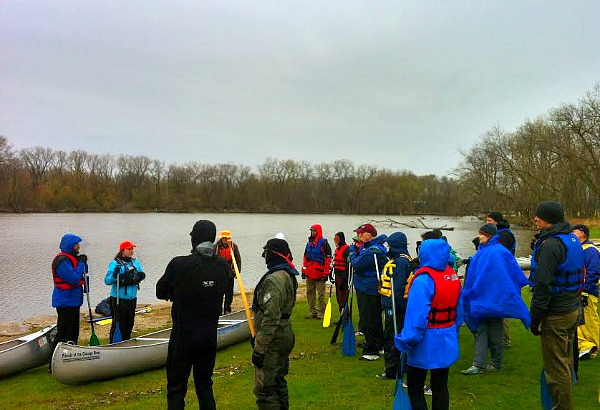
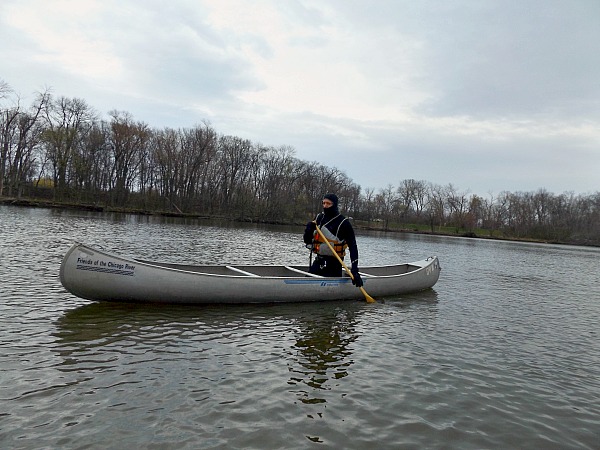

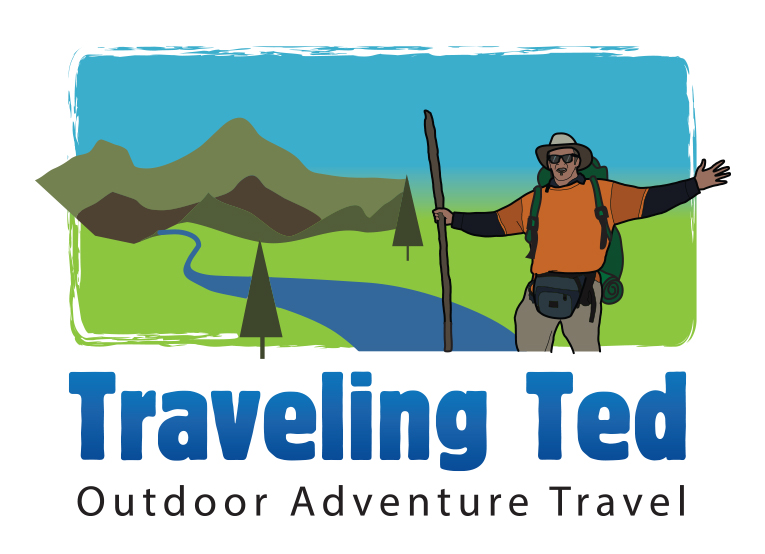
I know you said you like canoes over kayaks but this is exactly what I’m afraid of – turning over and then getting back in with the water in the canoe. I don’t want to even fall off a kayak for that matter. BUT it looks like you learned a lot in this training Ted.
Lola recently posted..Surviving Long Haul Flights
It is easier getting out of a canoe if it flips. In a kayak you are harnessed in and either have to know how to roll it back upright or unzip yourself and pull yourself out while upside down under water.
I want to do a river trip with you! 🙂 Especially since there will be no Friendly Float this year. Boooo!
Check the Friends of Chicago River website or the Forest Preserves District of Cook County for upcoming trips.
OK if you were my guide, I’d get in that thing. I feel way more confident in the air. 🙂
Pola (Jetting Around) recently posted..Impressions of Chicago from a first-time visitor
Or perhaps falling through the air 🙂